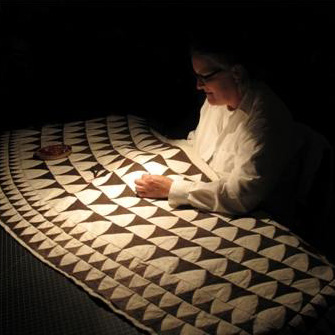Lead artist Wendeanne Ke’aka Stitt will create six kapa cloth costumes based on traditional Hawaiian garments that will be danced in a hula created by Kumu Hula Mark Keali’i Ho’omalu of the Academy of Hawaiian Arts.
Kapa is made from the inner bark of the wauke (paper mulberry) tree and involves stripping the outer bark, fermenting it in water to soften the fibers, pounding it out on a flat rock, soaking again, and pounding out on a wooden anvil with a carved wood mallet until the desired size is achieved. The cloth is then dyed and surface designs are applied with a carved, decoratively patterned bamboo tool.
Wendeanne Ke’aka Stitt began learning to make kapa as an apprentice to Kumu Kapa Dalani Tanahy and Hawaiian language teacher Kumu Kau’I Peralto, and as part of a group that became Kuku I Ka Pono, or “pounding kapa with purpose.” The group’s goal was to make kapa for use in the burial of bones disturbed by new construction in Hawai’i as well as bones repatriated from museums worldwide. Stitt, a visual display artist and quiltmaker, has become known as the most prolific maker of Hawaiian kapa in California. Her tools are made by hand from hardwood trees sustainably harvested in the Santa Cruz Mountains, and all of her dyes are derived from flowers, roots, berries, seeds, and minerals from Hawai’i and Santa Cruz.
The Academy of Hawaiian Arts, a hula halau based in Oakland, offers hula classes for dancers of all ages as well as classes in Hawaiian music and workshops in Hawaiian crafts. Stitt will work with the Academy’s creative director, costume mistress Puanani Schierenbeck, and women in the organization to create the six costumes.
These works premiered on November 8, 2015 at the ‘Oe E Ka La Hula Festival.

